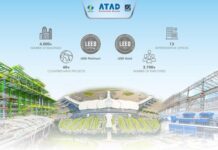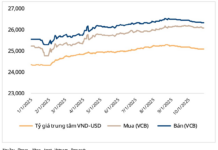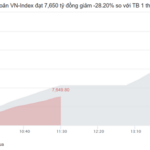The high-speed rail project, as planned, will pass through 20 provinces and cities from North to South, offering an opportunity to form a completely new development space along the length of the country. However, even now, this opportunity needs to be realized in a synchronized manner, with a clear and long-term philosophy.
What advantages will a chain of cities forming along the high-speed rail line have?
The most important advantage is the potential for connectivity and interaction among these cities. This capability enables high-speed rail cities to easily become regional service centers, reducing pressure on neighboring administrative, cultural, and social hubs.

Illustration: AI
Therefore, high-speed rail cities should be planned and designed to become service centers with compatible infrastructure. Accordingly, priority infrastructure will include static transportation, warehousing, transportation connection hubs, shopping malls, and product introduction centers.
With the vision of being service centers, these high-speed rail cities need to have a clear direction in terms of their functions to avoid becoming overly ambitious and trying to transform into multi-functional mega-cities. As the residents of these cities are primarily engaged in business and service provision, urban design must consider the cultural aspects, lifestyles, and living needs of these intrinsic communities.
Even at this stage, when the North-South high-speed rail project is still in its planning phase, it is crucial to define the opportunities it presents to make the most of them and avoid potential negative impacts.
For instance, the service cities forming along the rail line should be new towns with stations. They will not be existing administrative centers, nor will they add pressure to older cities.

Illustration: AI
The high-speed rail stations located in these cities will not merely be traditional stations but service complexes. The station will serve as a shopping and regional product introduction center, a cargo transaction and warehousing hub, a cluster of travel offices, and a transportation connection hub (including parking lots, car rental services, and bus terminals…).
As most residents of these cities are engaged in commerce and services, the planning will focus on compact cities with mainly apartment buildings and rental housing, rather than prioritizing low-rise housing.
High-speed rail cities will be public transportation-oriented, featuring well-planned and function-oriented development.
With this vision of the high-speed rail line’s potential, we can anticipate the emergence of dozens of high-speed rail cities with similar functional characteristics. What will this transformation entail?
Firstly, administrative centers will experience reduced pressure as a natural shift in the resident population occurs.
Secondly, positioning high-speed rail cities as service centers with transportation connection hubs will decrease the demand for private road transportation between regions.
While high-speed rail may not readily yield economic efficiency in terms of transportation, embracing the opportunity to establish high-speed rail cities allows us to envision a positive outlook for the country’s development space.








































